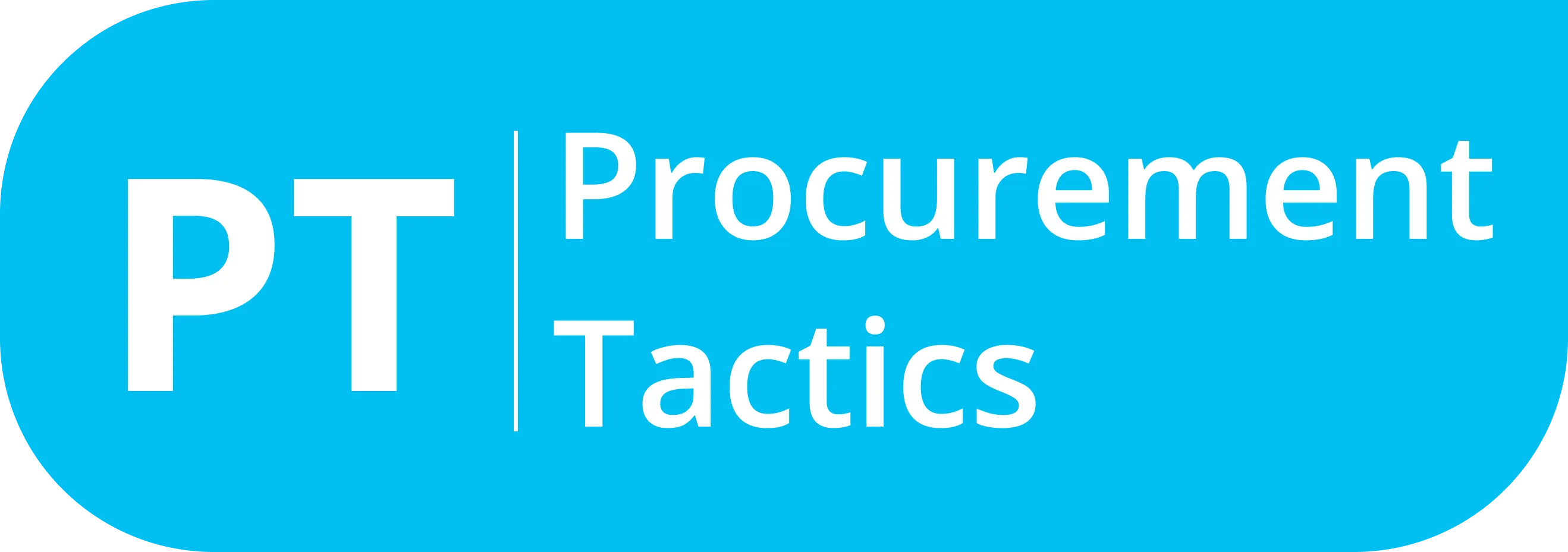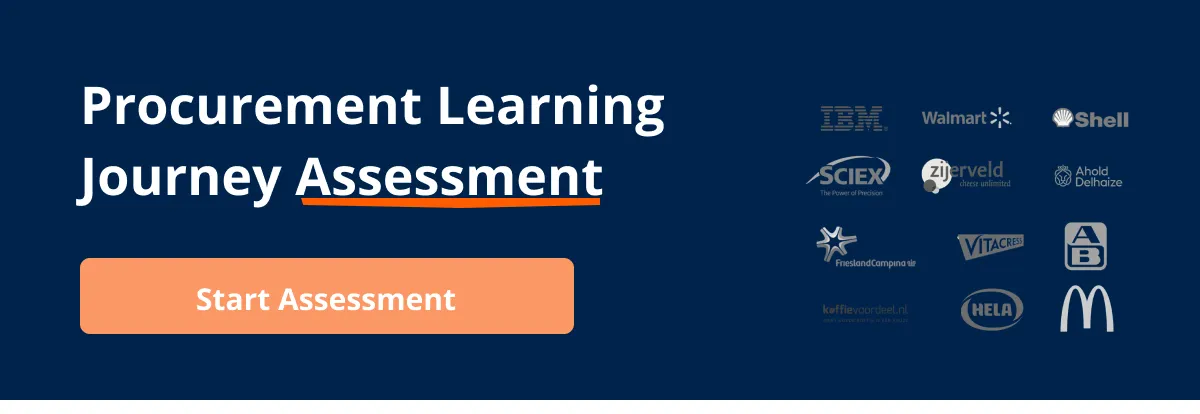Written by Marijn Overvest | Reviewed by Sjoerd Goedhart | Fact Checked by Ruud Emonds | Our editorial policy
Procurement Policy & Procedures — The Ultimate Guide 2024
Key takeaways
- Procurement policies and procedures are the established guidelines that an organization follows to ethically and efficiently obtain goods and services.
- While procedures specify how such policies are to be implemented, procurement policy provides overarching principles and standards.
- Clearly defining roles, designating an owner, and giving clear instructions are all recommended practices when developing procurement rules and processes.
The procurement policy and procedures are crucial documents in the procurement process. A procurement manager considers these documents as the core of the company. Without these procedures, they will be disorderly and will not function efficiently.
This article will talk about these procedures and policies. We will discuss its importance and its value. Moreover, we’ll emphasize why it is crucial in establishing your company’s procurement process.
By the end of this article, you’ll have a grasp of procurement procedures and policies. This added knowledge can help your journey as a procurement professional.
What is a Procurement Policy?
A procurement policy is an outline or set of procurement rules. It provides the overarching principles and standards used in the field. It sets the decisions and directions of the procurement process. Moreover, it guides an employee’s decision-making.
Through a framework set by the company, goals and objectives are more achievable. It helps individuals and teams organize their procurement activities. In simpler terms, this is a rule that professionals must follow.
Doing so will make a company’s procurement process better and objectives aligned and achievable. Of course, these policies and procedures are changeable.
Through modernization and considerations, they must adapt and accommodate these ideas. Ultimately, it can help a company push toward growth.
Why Do Procurement Businesses Need it?
Usually, individuals ask “Why do we need a procurement policy?” It starts when businesses grow their operations. In hindsight, businesses require less management and formalities when they’re beginning.
However, as they develop, they must handle their funds efficiently. Finances go here and there. Procurement businesses with fast-paced action face these challenges. Now comes a procurement policy.
It serves as a guide to helping businesses with their operations. It makes operations manageable, and information digestible. It also prevents unnecessary spending. Thus, procurement policies reduce risks and encourage efficiency. Procurement policies vary from one company to another.
The details within it are based on the company’s requirements. It starts from their standardized operation and moves toward quality. Such an efficient policy can only work if carefully planned and executed.
Procurement procedures and policies are not prescriptive. Meaning, these rules are not meant to constrict or restrain operations. Rather, they emphasize the value and importance of having a guide. Additionally, how having an organizational flow is crucial.
The Procurement Procedures: How it Works?
We must first understand how the procurement procedure works. Procurement procedures define the process of implementing your policies. They are the series of steps that your procurement team will follow until you’ve reached the goal.
The goal is always the result that your procurement process wants to achieve. The procurement procedure is consistently repeated until everyone understands the operation.
The only way to create a procedure is to come up with several procurement policies first. You can start procurement procedure creation once you establish a set of policies.
For example, a procurement procedure can come out in a certain way if it has a competitive bidding policy. Below is an example of the policy:
- Establishing clear requirements for a product or service your company will procure.
- Developing and approving an RFP or Request for Proposal. This process is followed to gather potential proposals and reduce possible risks.
- Identify prospective vendors
- Respond to vendor questions
- Receive, evaluate, and score proposals
- Down-select vendors and conduct interviews and demos
- Create scoring workbooks for proposal evaluation
- Perform pre-contract risk assessment and due diligence on the finalist supplier.
- Negotiate and award the contract.
Most companies have tools to help them constantly implement procedures. These tools range from templates, forms, and checklists. An example of these include an RFP template and a contract checklist. A proposal evaluation scorecard is also a great example.
At Ahold Delhaize and Friesland Campina, The strategic sourcing department takes charge. They develop the procurement policy and establish set guidelines. It was helpful to have direction on what a procurement manager should and should not do. Various documents outline the role of individuals in certain tasks.
There’s one designated for deal approval. One checks if the deal passes the regulatory framework. In short, if they’re viable for business. Policies are established to organize and regulate procurement services. It’s crucial to centralize this process to avoid abuse and promote procurement fairness.
Contents of a Procurement Policy
A procurement policy outlines the guidelines and procedures. It allows a business to organize and plan when acquiring goods and services. A procurement policy’s content varies from one organization to another. Though, for general knowledge, here are some elements found in such policy:
- Policy Statement and Purpose
- Authority and Responsibility
- Procurement Process Overview
- Procurement Method
- Supplier Selection Criteria
- Ethical Standards and Code of Conduct
- Budget and Spending Limits
- Supplier Diversity and Sustainability
- Documentation and Recordkeeping
- Contract Management
- Communication
- Compliance and Consequences
Remember, your procurement policies must align with the needs of your business. Additionally, you must also consider the industry’s requirements. The document must use clear and accessible language. This characteristic is for the benefit of the employees and the company.
How to Write a Procurement Policy?
Creating an effective procurement policy is crucial for streamlining company operations. Moreover, it allows them to align their procurement processes while safeguarding their interests.
This section outlines a concise, three-step guide on how to write a procurement policy:
1. Define your goals and needs
Spend some time thinking about what your procurement policy needs to do. Consider the surrounding factors and how they can potentially affect the company.
This way, you can build business and growth momentum while protecting the business. Ensure that the procurement policy aligns with these goals. Keep it in mind so that objectives are clear and goals are achievable.
2. Research and start writing a draft
Researching what a procurement policy should contain is crucial to establish its authority. Find policies that you think can be beneficial to your company.
After that, draft an initial policy that can be agreeable and valid for everyone. Remember to be concise and clear with the purpose and intention of the policy.
3. Get the approval of key stakeholders
The third step is meeting with your key stakeholders. Discuss the initial policy and gather ideas. It’s crucial to establish ground and ideas with them to enforce the policy.
Moreover, it can highly benefit from the procurement manager’s advice. You can also consider your direct supervisor’s insights on the policy.
After going through the stakeholders, move through the crucial departments. Consult with the finance, legal, and operations department. This way, you can polish the procurement policy and establish its authority.
Of course, the final edit of the procurement policy draft lies in the hands of the one who pursues it. While you listen to their suggestions, consider if they are viable for the final policy. After all of the effort, submit it for executive approval.
Best Practices for Procurement Policies and Procedures
You must also understand the best practices for building procurement policies and procedures. Knowing this crucial knowledge can help you establish its validity and authority.
Think of how you will document these policies and procedures. These documents must reflect the things you want to cover in the company.
These procurement policies and procedures must also be readable and accessible. This way, your procurement teams can use them to its full effect.
Here are some of our pointers to ensure its maximum efficiency:
- Assign someone who will manage and maintain the procurement policies and procedures.
- Provide a clear identification of the roles and responsibilities of the procurement team.
- Choose people who can help in interpreting and resolving problems.
- Reference forms, templates, checklists, and other tools that the staff can use
- Establish policy statements that address the procurement policies and procedures.
- Develop procedures that offer employees the flexibility to move around the work environment.
- Use clear and simple instructions that your procurement team can understand.
Conclusion
In conclusion, a robust procurement policy and procedure can guide businesses toward success. This process is crucial, especially for those in this business field.
Businesses that must continuously grow their procurement needs must establish procurement policies. It provides a stable framework, allowing for flexibility and leniency in their procurement.
Moreover, having a comprehensive procurement policy reduces risks and issues. It addresses concerns such as supplier vetting and contract negotiation.
It also enhances risk management. This enhancement is especially important in safeguarding the organization. Be it from financial or legal challenges.
Putting a robust procurement policy is crucial. It can help establish the confidence of the organization toward efficient procurement.
Frequentlyasked questions
What is a procurement policy?
A procurement policy is a set rule followed by the procurement team. These are rules that help in setting smoother transactions for procurement processes.
Why is it important for procurement businesses?
It serves as a guide to helping businesses with their operations. It makes operations manageable, and information digestible. It also prevents unnecessary spending. Thus, procurement policies reduce risks and encourage efficiency. Procurement policies vary from one company to another.
How to create a procurement policy?
To create a procurement policy, data must first be gathered. List down all rules that can help in achieving the best outcome for the procurement process.
About the author
My name is Marijn Overvest, I’m the founder of Procurement Tactics. I have a deep passion for procurement, and I’ve upskilled over 200 procurement teams from all over the world. When I’m not working, I love running and cycling.


